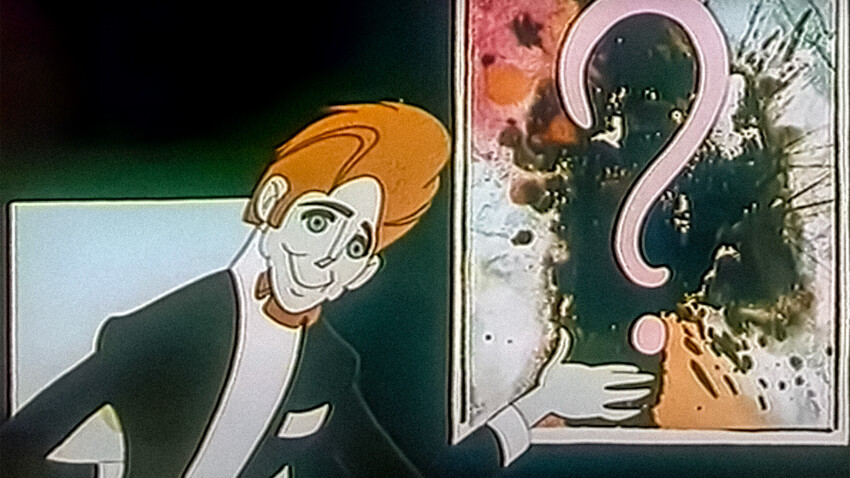
The legendary Moscow film studio ‘Soyuzmultfilm’ was established in 1936 with an eye on Disney technology and aesthetics. This is especially felt in the early works, such as Aleksandr Ivanov’s ‘The Public’s Darling’, which was a spoof of Disney’s ‘Silly Symphony’. The writers mischievously ridicule various charlatans of the stage, using the example of singer ‘Gus Lapchaty’ (a goose) and his accompanist ‘Khryu-Khryu’ (a pig, hence the name - ‘Oink-Oink’). The first one bares a striking resemblance to an early Donald Duck, while his companion appears to be a copy of one of the ‘Three Little Pigs’, released in 1933. The would-be musicians not only steal other artists’ material, abandon gigs without finishing, but also bring foxtrot the masses. And it’s not even clear which of the sins is the worse!
One of the pioneers of Soviet animation, Ivan Ivanov-Vano is primarily associated with fairy tales. Among his masterpieces are two versions of Pyotr Yershov’s ‘Konyok Gorbunok’ (‘The Little Humpbacked Horse’), Samuil Marshak’s ‘12 Months’ and many other children’s cartoons. However, animators, even storytellers, were constantly required to do something about the topic of the day.. It was especially persistent during the period of ideological campaigns, such as the so-called fight against “cosmopolitanism”, as well as the “idolization of the West” (1948-1953). Then it hit all spheres of culture, including popular music. The famous slogan: “Today he plays jazz and tomorrow he will sell his homeland!” - exactly those years. In the animated fable ‘Someone Else’s Voice’ by director Ivan Ivanov-Vano, fortunately, doesn’t feature such an outcome, as the “sycophant” is caught before they get the chance. According to the plot, a magpie returns from abroad, where she picked up fashion trends and now declares to everyone in the forest that the good old nightingale trill is outdated. She puts on a great jazz performance to show how to sing now, but they laugh at her and send her away..
Criticism of abstract art in the USSR had reached its crescendo after Nikita Khruschev’s famous visit to an art exhibition at the Manezh hall in December, 1962. The Soviet leader just couldn’t handle it and even resorting to obscene speech to describe the avant-garde works on display, which soon began disappearing from galleries. At Soyuzmultfilm, Grigory Kozlov had already made a cartoon about the plight of a realist artist in the West: nobody buys his paintings – they’re “too boring” and “not fashionable at all”. Then, one day, a painting of his, reminiscent of Edward Hopper’s ‘Nighthawks’, gets caught in the rain and the colors begin to run, transforming it into a blotted mess and leading to it being sold for a large sum. The artist then understands the situation and becomes the new Jackson Pollock. He begins to chuck paint at the canvas, trample all over it, storm it with a broom and engages in various forms of disfiguring portraits and still life. However, during the night, he gets payback in the form of a nightmare, where he finds himself inside the world of his own paintings, where the monsters he created come alive and try to transform him into one of their own.
A decade and a half later, the story of ‘Another’s Voice’ repeated itself, but in a different setting. A city inhabited by living musical instruments gets a visit from an American saxophone with an ultra-modern jazz set list, titled ‘Coca-Cola-phony’ (the name alludes to both cacophony and soda – a symbol of capitalism). Altos, trombones, violins and other citizens rush to the premiere, but their happiness quickly turns to horror: there’s no melody; the sax – instead of playing notes – is spitting out frogs and its accompanist, a drum, is banging on tin cans. The classical instruments not only boo the performers, but also give them a good kicking, kicking them onto the first train out of town. With exception of the narrator, who introduces the story and reads the final moral, the instruments communicate solely through music!
Times had changed by the late 1970s and it was somewhat allowed to make fun of Western art in a more amicable manner. Yefim Gamburg released a four-part almanac, parodying the most popular crime movie cliches, including the Soviet kind. The American chapter, of course, is full of shoot-outs, explosions and chases. Kirk Douglas does a striptease in reverse – he dresses for money, while Marlon Brando “plays” a corrupt cop; in the French chapter, Jean Gabin and Alain Delon rob a bank using the magic of animation and a trained mouse. But, as you know, the main thing is not even to steal, but to divide the stolen goods. In the Italian chapter, meanwhile, the hero Marcello Mastroianni – a poor father with multiple children – only needs to voice the idea of a robbery, all of Italy, like one big family, including the bank staff, rush to help him. The only problem is that he then has to divide the money among everyone to whom a debt is owed. Then, the father gets more happy news: his wife just gave birth to five more children!
Dear readers,
Our website and social media accounts are under threat of being restricted or banned, due to the current circumstances. So, to keep up with our latest content, simply do the following:
If using any of Russia Beyond's content, partly or in full, always provide an active hyperlink to the original material.
Subscribe
to our newsletter!
Get the week's best stories straight to your inbox